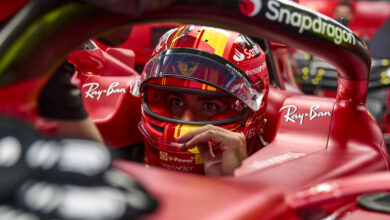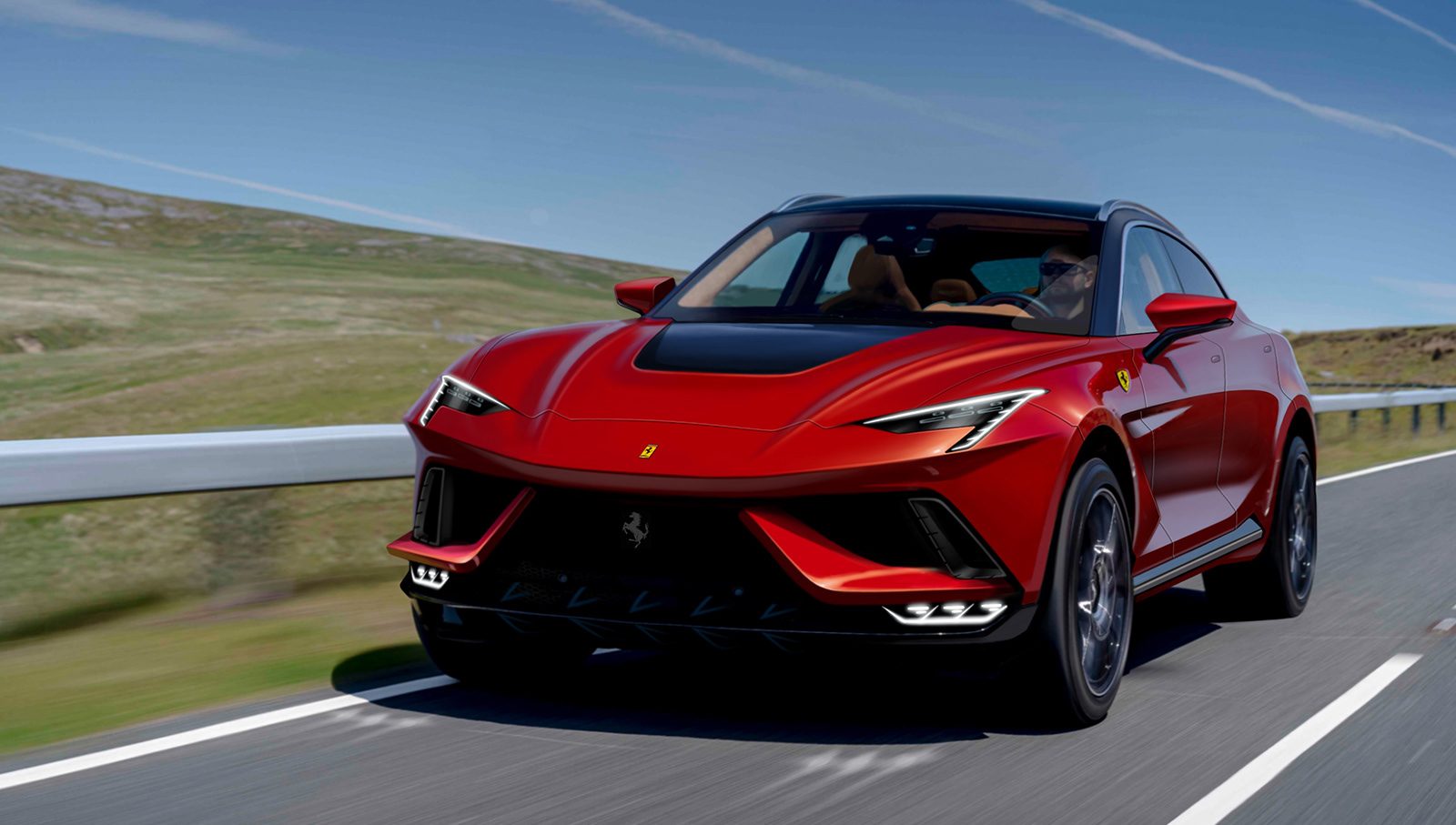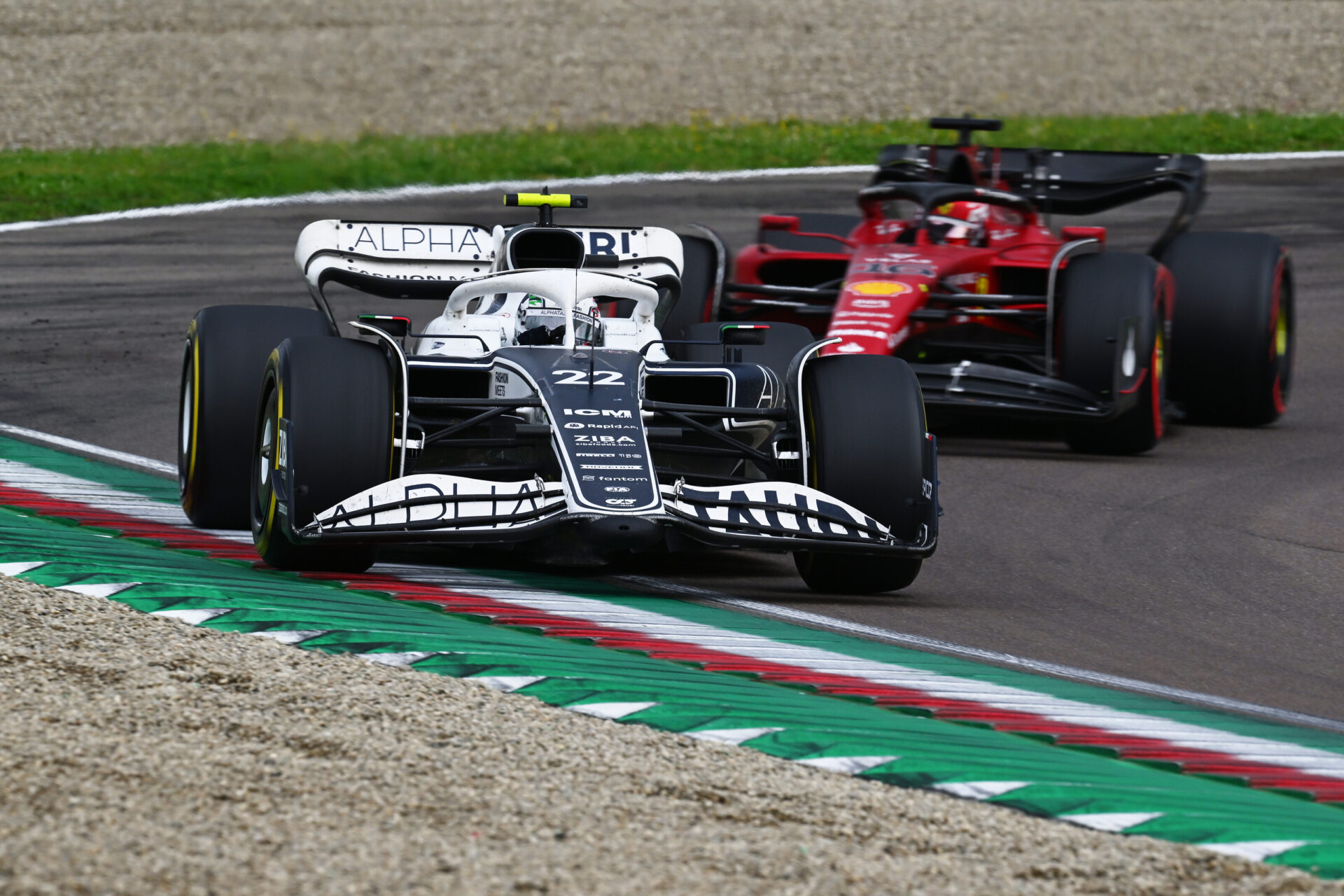F1 Analysis: Sainz Highlights Tire Strategy and Dirty Air Challenge at Bahrain Grand Prix
In a recent race, Ferrari’s Carlos Sainz emphasized the difficulty of overtaking Red Bulls due to dirty air and tire advantages. This challenge was evident during the Bahrain Grand Prix, where he finished third.
Key Takeaways:
- Tire Strategy and Dirty Air Impact: Sainz pointed out the Red Bull’s superior tire degradation, which enabled their soft tires to last as long as other cars’ hard tires. This significant tire advantage presented an overtaking challenge for Sainz, especially when following closely behind the RB20.
- Sainz’s Third-Place Finish Behind Red Bulls: Despite choosing hard tires in the final stint of the race, Sainz finished third, trailing behind Red Bull’s Max Verstappen and Sergio Perez, who opted for soft tires. The Ferrari driver acknowledged the hard compound’s potential superiority but faced difficulties due to the dirty air behind Perez’s car.
- Red Bull’s Tire Degradation Advantage: The Red Bull cars, particularly the RB20, showed impressive tire management, making the soft tires comparable in degradation to hard tires on other cars. Sainz’s observation raises concerns about a potential disadvantage for teams using soft tires against Red Bull.

The Race Dynamics and Sainz’s Strategy
The Bahrain Grand Prix saw a strategic battle, with Carlos Sainz securing a respectable third place behind the Red Bull duo, Max Verstappen and Sergio Perez. Interestingly, the Red Bull drivers were on soft compound tires during the race’s final phase, while most competitors, including Sainz, opted for hard tires.
Receiving updates via team radio, Sainz was informed about the anticipated superior performance of the hard tires over the softs due to degradation. Despite this, overtaking Red Bulls remained a daunting task. Sainz recognized their prowess in maintaining tire pace under challenging conditions. He observed that the soft tire degradation on the Red Bulls was on par with the hard tire degradation on other cars.
Speaking candidly to the media, Carlos Sainz expressed his insights:
“You need to consider that we’ve been testing here for three days and I’ve been seeing that Red Bull degradation on Soft [tyres] – it’s exactly the same as ours on the Hards. As soon as I knew Red Bull had a new Soft for the last stint and Checo had it, it’s not like I went ‘OK, this is my chance’. I’ve seen the long runs they did on the C3 tyre in testing and you could see that they basically have the same degradation on the Soft as what everyone had on the Hard. So I wasn’t getting too excited.”
Dirty Air Problems
Despite being within a three-second gap, Sainz couldn’t close in on Perez due to the dirty air emitted by the Red Bull car. He elaborated on the difficulties faced:
“I was in a bit of an uncomfortable position because you’re in a two, three-second margin where you get all the dirty air but you don’t get the advantage of the DRS in the slipstream. So you’re just sliding a bit more. If I had been within a second or maybe five seconds behind I think on the Hard tyre I could have maybe shown a bit more of the true pace of the car and my pace. But in that two, three seconds, it’s the worst place to be and I could never mount any proper challenge on Checo.”
Sainz’s experience at the Bahrain Grand Prix highlights the intricate balance between tire strategy and the physical challenges of racing, like dealing with dirty air. As the season progresses, teams will undoubtedly focus on these aspects to enhance their competitiveness in future races.



